
|
|
|
|
|

|
The Boeing C-17 Globemaster III; Ramstein Air Base, June 19, 2007
Die Deutschland-Tour 2007: Teil 2; Text and Photograph's by Alex van Noye
I would also spend the second day of my trip through the southern part of Germany at Ramstein AB. Many C-17
Globemaster III transport aircraft from various units within the USAF arrive and depart every day at this
great base. This is a nice moment to take a closer look at this gigantic transport plane.
The Boeing C-17 Globemaster III is one of the largest military transport aircraft of the USAF. The aircraft
was designed for the U.S. Air Force and it was developed in the eighties by McDonnell Douglas. The C-17 is
used for strategic airlift of troops and cargo to the main operating bases or forward bases around the world.
The aircraft can also be used for tactical airlift, medical evacuation and airdrop missions. The C-17 has the
same name as the last two U.S. military cargo planes, namely; the C-74 Globemaster and the C-124 Globemaster II.
The name C-17 Globemaster III was given to the plane. The C-17 is used by the USAF, but also the air forces
of the United Kingdom, Australia, Canada, NATO and Qatar are using this aircraft. Even countries like India
and the United Arab Emirates have expressed interest to buy this aircraft. The USAF has currently more than
170 C-17s in service. In the future this number will increase to over 200 aircraft.
In the seventies, the U.S. Air Force was looking for a replacement for the C-130 Hercules which is used for
tactical airlift tasks. The project, called “Advanced Medium STOL” (AMST), was launched. Boeing and McDonnell
Douglas came with a prototype very quickly, namely; the YC-14 from Boeing and the YC-15 from McDonnell Douglas.
Both projects exceeded the specifications of the aircraft which were given by the USAF for this new plane. The
AMST project was rejected before a contract was given for one of the prototype planes. The familiar Hercules
could continue his duties until further notice. Even new variants of the Hercules were produced for the future.
The USAF started yet again with the AMST project in November 1979; the requirements were different this time.
The AMST project was renamed to the CX program. The aim of this project was to develop an AMST with a bigger
range and with a strategic airlift capacity. The McDonnell Douglas YC-15 design was quickly used as the basis
for the C-17. In the early eighties it was decided that the current project would replace the outdated C-
|
|
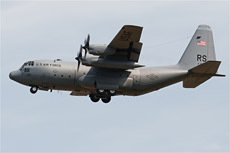
|
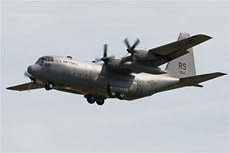
|
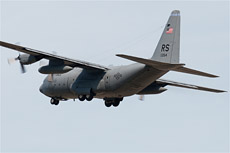
|
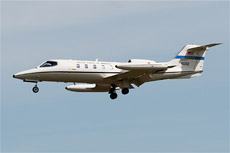
|
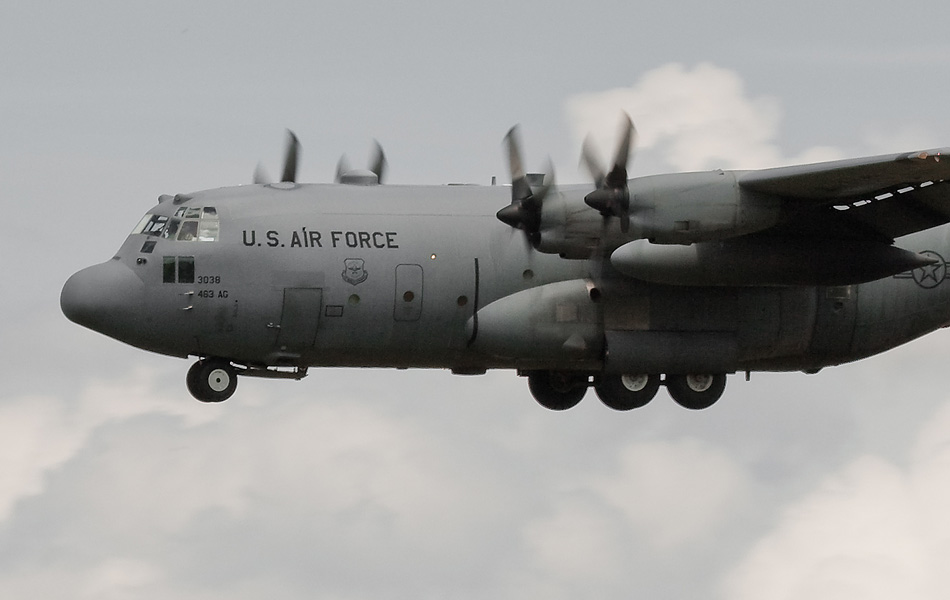
|
141 Starlifter fleet. Until now, the USAF has never been in possession of sufficient capacity to meet the
airlift requirements. Boeing had offered to develop a three-engine variant of the YC-14. Lockheed offered a
variant that was based on the C-5 Galaxy and C-141 Starlifter. The USAF decided on August 28, 1981 after a
long competition with Boeing and Lockheed that the McDonnell Douglas variant was the best option. The new
strategic transport aircraft was named C-17. The new plane was equipped with swept wings and more powerful
engines than the current transport aircraft. The C-17 would replace the C-141 Starlifter and at the same time
a few number of heavy transport tasks of the C-5 Galaxy were taken over by this aircraft.
A lot of C-17s of the U.S. Air Force would arrive today at Ramstein AB. The day started early at Ramstein. I
was present around 7 am along the runway of this huge airbase. The weather today was good. There were a few
clouds present in the air, but generally it looked good. This is the ideal weather to take pictures of the
large transport aircraft of the USAF. The 86th Airlift Wing was active early, because soon after my arrival,
two Hercules aircraft started to fly circuits at Ramstein. These aircraft of the 86th will be replaced with
new aircraft of the same type in a short period. The C-130E which is currently operational will be replaced
by the C-130J. The C-130J is the latest model of the Hercules family. The old C-130E aircraft will be moved
to AMARC, Arizona after their replacement. The aircraft are put into storage over here and their operational
lives will be ended. Also a C-21 began to fly circuits besides the two Hercules aircraft. This small aircraft
is used by the Americans to train the pilots of large transport aircraft. I was pleased with these three aircraft,
because I do not have too many of these aircraft in my photo collection.
The best moment of the day took place at nine o’clock. A C-5 Galaxy of the AFRC (Air Force Reserve Corps)
appeared at the head of the main runway. This enormous aircraft was about to start his transatlantic flight to
the United States. The light on the departing aircraft is at this time of the day very nice. The huge aircraft
stopped at the head of the runway, because there was a Hercules inbound Ramstein. This gave me the opportunity
to get this big aircraft on photo properly. Two more C-5 Galaxy's appeared on the horizon in a short time after
the departure of this aircraft. These aircraft arrived straight in from America. The first aircraft which came
in was from the Texas AFRC. The incoming Galaxy’s hung almost motionless in the air during their landing. It's
very impressive to see these big aircraft when they arrive. The second C-5 which came in was from Dover AFB in
America. This aircraft is indicated by the yellow tail band with the name of Dover on it.
The next aircraft that came in was a nice visitor too. It was a Hercules of the 348th Air Group nicknamed "The
Rock". This aircraft came from Little Rock AFB. Many C-17’s would arrive after the landing of the Hercules. A day
at Ramstein without a C-17 is a bad day at Ramstein. The nice fact of all the landing C-17's was that they were
all from different units. The first C-17 which came in was from McChord AFB; the aircraft is identified by the
green tail band. The next C-17 that came in was one of the Mississippi ANG. This aircraft is indicated by the
light blue tail band and it is based at Jackson-Evers IAP. The third C-17 that came in was from March AFB. This
aircraft is indicated by the red and yellow tail band. The fourth and final C-17 that came in was from McGuire AFB.
This aircraft is indicated by the blue tail band with yellow letters. The unit is assigned to the 305th AMW. I
left Ramstein and headed for Manching-Ingolstadt after the landing of the last C-17. There are temporarily a
number of Swiss Air Force F-18 Hornetts present at Manching for the exercise Elite.
|
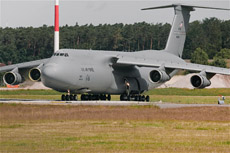
|
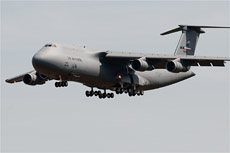
|
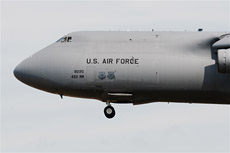
|
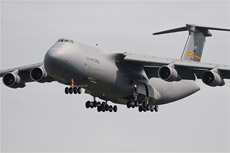
|
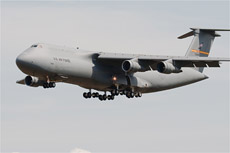
|
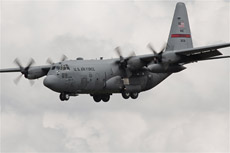
|
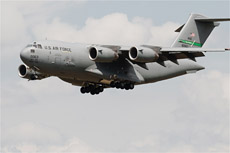
|
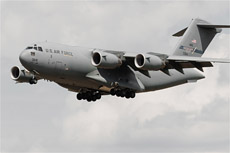
|
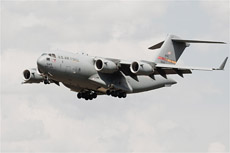
|
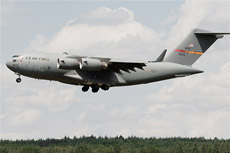
|
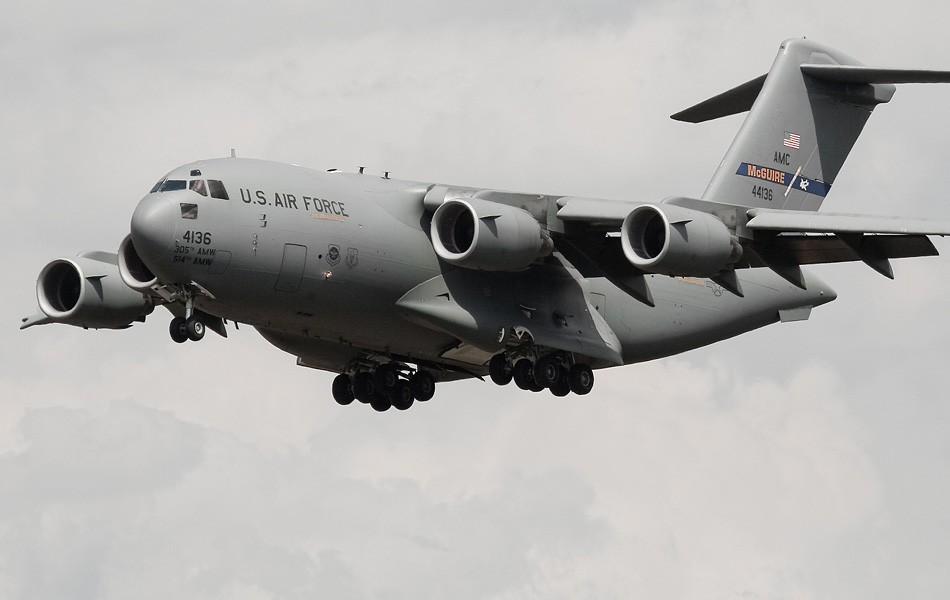
|
|
|

|







